#Azimuth 36
Video
Sitting on the Dock of the Lake (Glacier National Park) by Mark Stevens
Via Flickr:
While walking along the Swiftcurrent Lake Trail with a view looking to the northeast across the waters of Swiftcurrent Lake. This is in Glacier National Park. My thought on composing this image was to align myself with the boat dock to my front and use that as a leading line into the image. I wanted to ensure that I included the Many Glacier Hotel off in the distance as well as the ridges coming off Altyn Peak as a backdrop with blue skies above.
#Alberta and Glacier National Park#Altyn Peak#Azimuth 36#Blue Skies#Blue Skies with Clouds#Boat Dock#Central Montana Rocky Mountains#Day 7#Dock#DxO PhotoLab 6 Edited#Evergreen Trees#Evergreens#Forest#Forest Landscape#Glacier National Park#Glacier National Park Ranges#Hillside of Trees#Hotel#Lakeshore#Landscape#Landscape - Scenery#Lewis Range#Lodge#Looking NE#Many Glacier Hotel#Mountain Peak#Mountains#Mountains in Distance#Mountains off in Distance#Mountainside
2 notes
·
View notes
Text

✶ ┊ 𝑪𝑯𝑨𝑹𝑨𝑪𝑻𝑬𝑹 𝑺𝑯𝑬𝑬𝑻
𝐅𝐔𝐋𝐋 𝐍𝐀𝐌𝐄. Şehzade Süleyman
𝐍𝐈𝐂𝐊𝐍𝐀𝐌𝐄. the Diamond
𝐀𝐋𝐈𝐀𝐒𝐄𝐒. Galeb Bazory
𝐏𝐑𝐎𝐍𝐎𝐔𝐍𝐒. he / him
𝐒𝐈𝐙𝐄. 6'5"
𝐀𝐆𝐄. 313
𝐙𝐎𝐃𝐈𝐀𝐂. virgo
𝐒𝐏𝐎𝐊𝐄𝐍 𝐋𝐀𝐍𝐆𝐔𝐀𝐆𝐄𝐒. English, Persian, Ottoman Turkish, modern Turkish, Greek, Arabic, Latin, Spanish, French and Italian
✶ ┊ 𝑷𝑯𝒀𝑺𝑰𝑪𝑨𝑳 𝑪𝑯𝑨𝑹𝑨𝑪𝑻𝑬𝑹𝑰𝑺𝑻𝑰𝑪𝑺
𝐇𝐀𝐈𝐑. short, black, tidy
𝐄𝐘𝐄𝐒. blue
𝐒𝐊𝐈𝐍 𝐓𝐎𝐍𝐄. caucasian
𝐁𝐎𝐃𝐘 𝐓𝐘𝐏𝐄. slim but muscled
𝐕𝐎𝐈𝐂𝐄. deep, calm, mostly unemotional
𝐃𝐎𝐌𝐈𝐍𝐀𝐍𝐓 𝐇𝐀𝐍𝐃. right hand
𝐏𝐎𝐒𝐓𝐔𝐑𝐄. straight
𝐒𝐂𝐀𝐑𝐒. none
𝐁𝐈𝐑𝐓𝐇𝐌𝐀𝐑𝐊𝐒. none
𝐌𝐎𝐒𝐓 𝐍𝐎𝐓𝐀𝐁𝐋𝐄 𝐅𝐄𝐀𝐓𝐔𝐑𝐄𝐒. azimuth compass tattoo on the back of right hand
✶ ┊ 𝑪𝑯𝑰𝑳𝑫𝑯𝑶𝑶𝑫
𝐏𝐋𝐀𝐂𝐄 𝐎𝐅 𝐁𝐈𝐑𝐓𝐇. Topkapi Palace, Constantinople, Ottoman Empire
𝐇𝐎𝐌𝐄𝐓𝐎𝐖𝐍. Constantinople, Ottoman Empire
𝐒𝐈𝐁𝐋𝐈𝐍𝐆𝐒. Şehzade Mustafa ( Mustafa III) , 20 half-brothers and at least 36 half-sisters
𝐏𝐀𝐑𝐄𝐍𝐓𝐒. father: Ahmed III / deceased
mother: Jeannette de Bazory ( aka Mihrişah ) / deceased
✶ ┊ 𝑨𝑫𝑼𝑳𝑻 𝑳𝑰𝑭𝑬
𝐎𝐂𝐂𝐔𝐏𝐀𝐓𝐈𝐎𝐍. diamond merchant, executioner
𝐂𝐔𝐑𝐑𝐄𝐍𝐓 𝐑𝐄𝐒𝐈𝐃𝐄𝐍𝐂𝐄. Boston, Massachusetts
𝐂𝐋𝐎𝐒𝐄 𝐅𝐑𝐈𝐄𝐍𝐃𝐒. none
𝐃𝐑𝐈𝐕𝐄𝐑'𝐒 𝐋𝐈𝐂𝐄𝐍𝐒𝐄. none
𝐂𝐑𝐈𝐌𝐈𝐍𝐀𝐋 𝐑𝐄𝐂𝐎𝐑𝐃. none on ' official ' record
𝐕𝐈𝐂𝐄𝐒. murder, manipulation, can appear cruel and cold
✶ ┊ 𝑺𝑬𝑿 & 𝑹𝑶𝑴𝑨𝑵𝑪𝑬
𝐒𝐄𝐗𝐔𝐀𝐋 𝐎𝐑𝐈𝐄𝐍𝐓𝐀𝐓𝐈𝐎𝐍. bisexual
𝐏𝐑𝐄𝐅𝐄𝐑𝐑𝐄𝐃 𝐄𝐌𝐎𝐓𝐈𝐎𝐍𝐀𝐋 𝐑𝐎𝐋𝐄. dominant, will mostly be distant but will open up on very rare occasions if he trusts someone
𝐏𝐑𝐄𝐅𝐄𝐑𝐑𝐄𝐃 𝐒𝐄𝐗𝐔𝐀𝐋 𝐑𝐎𝐋𝐄. dominant
𝐓𝐔𝐑𝐍 𝐎𝐅𝐅𝐒. ignorance, naivety
𝐓𝐔𝐑𝐍 𝐎𝐍𝐒. intelligence, people who show an active interest in him on a personal level, people who show active interest in trying to make him better
𝐋𝐎𝐕𝐄 𝐋𝐀𝐍𝐆𝐔𝐀𝐆𝐄. physical touch, hand-holding
𝐑𝐄𝐋𝐀𝐓𝐈𝐎𝐍𝐒𝐇𝐈𝐏 𝐓𝐄𝐍𝐃𝐄𝐍𝐂𝐈𝐄𝐒. will never expect himself to end up in a relationship. However, if he does fall for someone, he'll be entirely loyal to them while also trying his best to juggle his loyalty to the Prince and the Camarilla as well as keeping them separate from each other for his lover's safety.
✶ ┊ 𝑴𝑰𝑺𝑪𝑬𝑳𝑳𝑨𝑵𝑬𝑶𝑼𝑺
𝐂𝐇𝐀𝐑𝐀𝐂𝐓𝐄𝐑'𝐒 𝐓𝐇𝐄𝐌𝐄 𝐓𝐔𝐍𝐄. Literally has his own theme
𝐇𝐎𝐁𝐁𝐈𝐄𝐒 𝐓𝐎 𝐏𝐀𝐒𝐒 𝐓𝐇𝐄 𝐓𝐈𝐌𝐄. reading
𝐋𝐄𝐅𝐓 𝐎𝐑 𝐑𝐈𝐆𝐇𝐓 𝐁𝐑𝐀𝐈𝐍𝐄𝐃. left-brained
𝐒𝐄𝐋𝐅-𝐂𝐎𝐍𝐅𝐈𝐃𝐄𝐍𝐂𝐄 𝐋𝐄𝐕𝐄𝐋. complicated. he knows his strengths and weaknesses, has realistic expectations, can handle whatever is said to / about him all while utterly despising what he is and the things he's done and will continue to do until his final death.
𝙏𝘼𝙂𝙂𝙀𝘿 𝘽𝙔: @heirofhermes, thank you! <333333
𝙏𝘼𝙂𝙂𝙄𝙉𝙂: everyone who would like to try it.
9 notes
·
View notes
Text
Portable Rozeta is a program that draws rosette diagrams.
A rosette plot is a circular histogram that shows the distribution of linear elements in a plane. It can be, for example, the distribution of transport directions in a sedimentation basin, slopes of fracture planes, fault fractures, directions of current blades, winds, etc.
These types of diagrams are often used in structural geology, geography, and other sciences.
How to work with Portable Rozeta:
Measurement
A series of angular measurements in degrees must be given as input. The Measurements window is used to enter data. To view them, select the menu File-> Edit Measurements… or press the F4 key.
Measurement values must be integers or real (floating point) numbers. The decimal separator can be. (dot) or, (comma). A measurement should be given on a line. Blank lines and lines with invalid values are ignored.
If you have measurements in gons or radians, you can convert them to degrees using the built-in angle measurement converter (F6 key).
draw a diagram
First, the program creates numeric (angular) intervals of the size specified in the Class Size drop-down list (default 36 intervals of 10 degrees).
Each of the previously entered measurements is assigned to an appropriate angular interval. All compartments (except the first) open to the left and close to the right (by default, the value of 10 ° will be included in the first interval, the value of 11 ° – in the second). 0° belongs to the first range, 360° to the last range.
The radius of the plot represents the number of measurements in the interval(s) with the largest number of measurements.
Depending on the selected diagram type, the drawing method is as follows:
“Classic” rose window (circular sections)For each angular interval with a number of measures greater than 0, a circular segment of length proportional to the previously determined radius and the number of measures in that interval is drawn.PolygonFor each angular interval with the number of measurements greater than 0, a point is marked in the middle of this interval (for example, 15° for the 10°-20° interval) at a distance proportional to the radius previously determined and the number of measurements in a given interval. If the interval contains no measurements, the zero point is marked. After all the points are determined, they are connected with straight lines to form a polygon.
Types of diagrams according to the type of measures
-Azimuth diagrams
Measurements must be between 0 and 360 degrees, and in the Measurement Type list, select Unidirectional – Azimuths (0°-360°). Measurement values beyond the range 0..360 will be ignored.
-Gear Diagrams
Half circle or full circle diagram with center symmetry turned on. In this case, only the course of the elements matters. Enter values from 0 to 180 degrees and select Bidirectional – Gears (0°-180°) in the Measurement Type list.
If in the series of measurements there are values outside the numerical range 0..180, the program can ignore such values or "normalize" to 180, that is, add or subtract the value 180 from a given measurement as many times, to obtain a value in the range 0..180 (for example, the measurement 230 would be interpreted as 230 – 180, or 50).
By default, a semicircle diagram (A) is drawn. However, for a better readability of the diagram, you can activate the central symmetry (B), then each segment of the diagram will also be drawn in the opposite quadrant. Center symmetry is only used when drawing the diagram, measurement values and statistics will not be changed.
XP/Vista/7/8/8.1/10English4.37MB
2 notes
·
View notes
Text
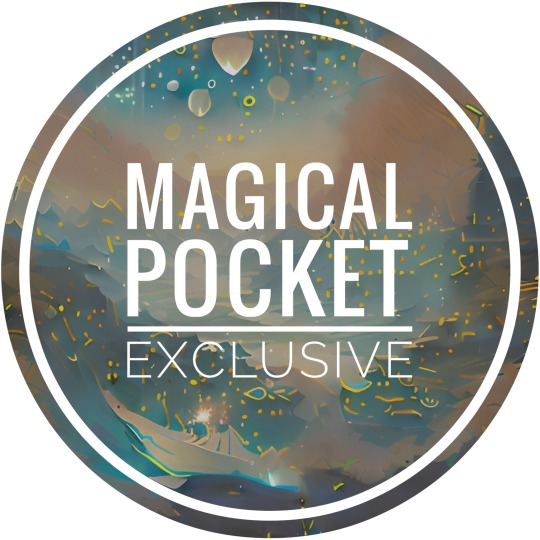
Sunday 22 October Mixtape 388 “Magical Pocket EXCLUSIVE”
Morning Lounge Experimental Electronic
Wednesdays & Sundays.
Support the artists and labels.
Don't forget to tip so future shows can bloom.
Trevlad Sounds-Welcome in you wonderful listener 00:00
Oblong-Frost Pocket 00:31
Oscar Rocchi-Medusa 03:34
Donnacha Costello-Mespil At Night 06:12
Oblong-Fast Radio Burst 08:31
Turista Per Sempre-Sweet Going 12:40
Can-All Gates Open 15:40
The Twelve Hour Foundation-Macaroni Cheese 22:54
Cloudface-3 step 26:18
The Ocean Tango-Azimuth 34:28
Lone Bison-Learning Poly 38:36
Bibio-Even More Excuses 40:57
Mark Barrott-Back To The Sea 44:50
Dexter Story-Eastern Prayer ft. Nia Andrews 46:22
Binaural Space-Sand Wedge 49:14
Moan (Shinji Masuko)-Banded Agates 50:04
Lone Bison-Origin Story 1:00:44
David Boulter-Back On The Estate - Instrumental 1:03:39
David Boulter-Back on the estate 1:06:34
The Twelve Hour Foundation-Sumer is Icumen In 1:09:52
Mooryc-Wiped Out 1:12:34
Domenique Dumont-Un Jour Avec Yusef 1:16:11
Bibio-Thatched 1:20:02
Piero Umiliani-Magical Children 1:23:49
Ginger Root-Loneliness 1:26:48
Polypores-Crystal Shop 1:29:46
Listening Center-Unconfident Days 1:33:10
#Piero Umiliani #Schema Records - Rearward #Ginger Root #Polypores #Waxing Crescent Records #Listening Center #morning music #lounge music #experimental music #electronic music
#Oblong#Memetune Recordings#Oscar Rocchi#Four Flies Vaults#Four Flies Records#Donnacha Costello#Look Long#Turista Per Sempre#Can#Mute#The Twelve Hour Foundation#Cloudface#The Ocean Tango#Lone Bison#Castles In Space#Bibio#Warp Records#Mark Barrott#International Feel#Dexter Story#Soundway Records#Nia Andrews#Binaural Space#Moan (Shinji Masuko)#Data Garden#David Boulter#Mooryc#Sonar Kollektiv#Domenique Dumont#Antinote
1 note
·
View note
Note
PS Neither the egg fic nor the vegan freak have anything to do with M/gastar before you try it. That's all pure Starscream stanning, baby. And one of them is St/rop, the supposedly ""good""" ship LOL.
List of female Transformers Main Complete list Following is a thorough list of the various female Transformers in canon thus far. Many of these characters were Japan-exclusive, featured only in fiction, or exist as limited-run exclusive toys. Female characters who had multiple toys are listed only once. Generation 1 (Numbers indicate order of appearance.) Chromia (1) Moonracer (2) Firestar (3) Elita One (4) Greenlight (5) Lancer (6) Arcee (7) Beta (8) An Autobot rebel (9) Paradron Medic (11) Nancy (12) Minerva (13) Clipper (14) Karmen (18) Glyph (20) Road Rage (21) Discharge[1] (22) Windy[1] (23) Vibes (24) Roulette (25) Flareup (32) Flip Sides (34) Rosanna (35) Windrazor (38) Thunderblast (46) Cassiopeia (47) Nautica (51) Windblade (52) Victorion (61) Velocity (63) Javelin (62) Proxima (64) Roadmaster (65) Acceleron (66) Override (69) Rust Dust (70) Pyra Magna (71) Skyburst (72) Stormclash (73) Jumpstream (74) Dust Up (75) Scorpia[1] (76) Eos (80) Lifeline (83) Quickslinger (84) Hotwire[2] (98) Strongarm (99) Slide[2] (104) Crush Bull[2] (107) Oiler[2] (108) Broadside[2] (109) Sky High[2] (110) Circuit[2] (116) Pyra Ignatia Spark[2] (118) Scorchfire (122) Orthia (126) Smashdown[2] (128) Esmeral (15) Lyzack (16) Clio (17) Nightracer (19) Shadow Striker (26) Howlback (31) Flamewar (33) Flip Sides (34) Crasher (39) Freezon[1] (44) Nightracer (49) Slipstream (50) Twirl (54) Nickel (60) Swift (77) Killjoy (79) Blackout[2] (81) Spaceshot[2] (82) Crash Test (85) Trickdiamond (92) Moonheart (93) Megaempress (94) Flowspade (95) Lunaclub (96) Megatronia (100) Buckethead[1] (103) Diveplane[1] (112) Seawave[1] (113) Mindgame (114) Tracer[2] (115) Devastator[2] (117) Cindersaur[2] (125) Shadow Striker (127) Nova Storm[2] (129) Termagax (133) Kaskade (135) Heavywait (138) Tyrannocon Rex (139) Cheesecake robot (10) Roulette and Shadow Striker's sister (27) Path Finder (28) Small Foot (29) Devcon's galpal (30) One of Optimus Prime's rescuees (36) Angela (37) Four members of the Kaon upperclass (40-43) Ma-Grrr (45) Red waitress Transformer (48) Windshear (53) Solus Prime (55) Female protester (56) Lightbright (57) Strafe (58) Mistress of Flame (59) Exocet (67) Vertex (68) Aileron (78) Gnash (86) Slice (87) Thrashclaw (88) Shred (89) A pair of Devisen twins (90-91) Maxima (97) Sieg[3] (101) Kari (102) Anode (105) Lug (106) X-Throttle (111) Rum-Maj (119) Praesidia Magna (120) Fastbreak (121) Crash Test (122) Stardrive (123) Magrada (124) Leviathan (130) Codexa (131) Gauge (132) Lodestar (134) Shutter (136) Sharpclaw (137) Cargohold (140) Half-qualifiers: Alana, turned into a Transformer for a short time. Aunty, female Cybertronian intelligent computer. Combination granny and attack-dog-bots, human-sized drones supposedly based on Transformer technology. One of Maccadam's bartenders Nightbird Overlord, has a female side to him. Some of the "Teletraan" computers like 15 and 10 are female. There appears to be a female design among a group of old generics. Bayonet, the fake female Decepticon disguise of Britt. In the French dub of The Transformers: The Movie, Shrapnel and Starscream are considered female. Shrapnel is also female in the Russian dub. Beast Era (Numbers indicate order of appearance.) Airazor (2) Kitte Shūshū (5) Rage (6) Botanica (7) Sonar[1] (13) Crystal Widow (14) Crossblades (15) Stiletto (16) Transmutate[1] (18) Binary (19) Wedge Shape[1] (24) Aura (25) Legend Convoy[1] (26) Stockade[2] (28) Rav (29) Hammerstrike[2] (31) Triceradon[2] (35) Skimmer (36) Nyx (44) Blackarachnia (1) Scylla (3) Antagony (4) Strika (8) Manta Ray[1] (17) Ser-Ket (20) Dead-End[2] (27) Jai-Alai (30) Max-B[2] (32) Gaidora (33) Soundbyte/Soundbite (34) Liftoff (37) Freefall (38) Snarl-blast[2] (39) Vertebreak (43) Skold (45) Libras (9) Virgol (10) Cancix[1] (11) Possibly Sagittarii (12) Dipole (21) Vamp (22) Plasma[2] (23) Deep Blue (40) At least two bridge officers of the Terrastar (41-42) Half-qualifiers: NAVI-ko, female Cybertronian intelligent computer NAVI (Yukikaze), female Cybertronian intelligent computer NAVI (Gung Ho), female Cybertronian
intelligent computer DNAVI, female Cybertronian intelligent computer Medusa, an Intruder-built robot modified with Cybertronian technology Robots in Disguise (2001) (Numbers indicate order of appearance.) Optimus Prime[2] (1) Nightcruz[1] (3) Scourge[2] (2) Half-qualifiers: T-AI, female Cybertronian intelligent computer. Unicron Trilogy (Numbers indicate order of appearance.) Airazor (5) Arcee (9) Autobot nurses (10) Two Velocitronian band members (11-12) Override[4] (13) Joyride[4] (15) Quickslinger (16) Crystal Widow (24) Treadbolt (33) Chromia (34) Thunderblast (14) Spacewarp (30) Sureshock (1) Combusta (2) Falcia (3) Twirl (4) Sunburn (6) Cliffjumper[1] (7) Ironhide[1] (8) Spiral[1] (9) Offshoot[1] (17) Breakage[1] (18) Kickflip[1] (19) Mudbath[1] (20) Heavy Metal[1] (21) "Disco ball" (22) Road Rebel[1] (23) Guardian Speed[1] (25) Mugen[1] (26) Bingo/Triac[1] (27) Wedge Shape[1] (28) Sprite (29) Boom Tube (31) Windrazor (32) Rán (33) Half-qualifiers: A possible scooterformer Dark Nitro Convoy, evil clone of a character whose gender was switched in translation Red Alert, minimally-altered release of a toy that was female in Japan Midnight Express, unaltered release of a toy that was female in Japan Hourglass, a female character who might be a Cybertronian Bombshell, a female character who might be a Cybertronian Carillon, a female character who might be a Cybertronian Vector Prime, the former multiversal entity who was female in some universes Movie continuity family (Numbers indicate order of appearance.) Arcee (1) Elita-One (2) Chromia (4) Perihelion (8) HMS Alliance (9) Windblade (13) Fracture (3) Alice (5) Shadow Striker (6) Override[3] (7) Diabla (10) Howlback (11) Shatter (12) Nightbird Airazor Half-qualifiersJetfire claims to have a mother who may or may not have been a Transformer. Animated (Numbers indicate order of appearance.) Sari Sumdac (2) Arcee (3) Elita-1 (4) Red Alert (6) Botanica (8) Flareup (10) Rosanna (11) Glyph (12) Lickety-Split (13) Lightbright (14) Chromia (16) Clipper (17) Quickslinger (18) Kappa Supreme (19) Override Prime (20) Windy (21) Road Rage (25) Flashpoint (26) Minerva (27) Sureshock (28) Nightbeat (29) Sunstreaker (30) Blackarachnia (1) Slipstream (5) Strika (7) Flip Sides (9) Antagony (15) Wingthing (22) Beta (23) Drag Strip (24) Half-qualifiers: Teletran-1, female Cybertronian intelligent computer TransTech (Numbers indicate order of appearance.) Blackarachnia (5) Strika (3) Unnamed medic (1) Andromeda (2) Cyclis (4) Sonar (6) Hammerstrike (7) Scorpia (8) Proxima (9) Half-qualifiers: Axiom Nexus News Editor, a 'bot with one male and one female personality Shattered Glass (Numbers indicate order of appearance.) Crasher (1) Esmeral (6) Howlback (7) Arcee (2) Andromeda (3) Elita-One (4) Strongarm (8) Windblade (9) Nautica (10) Beta (5) Half-qualifiers: Teletraan-X, female Cybertronian intelligent computer. Aligned continuity family (Numbers indicate order of appearance.) Akiba Prime Arc Arcee Arcee Blade Assault Star Brushfire Cameo Catapult Chevalier Chromia Deep Blue Ether Walker Firestar Galaxy Flare Galaxy 'Questrian Glow Matronly Docent Quickshadow Rocket Plume Solus Prime Strongarm Tempest Spin Thunderclap Upkeep Windblade Airachnid Astraea Aurora Speeder Balewing Coldstar Crimson Phantom Cyberwarp Cyclone Dancer Diabla Duststorm Fallen Angel Filch Flamewar Flash Runner Glowstrike Hoverbolt Helter-Skelter Hurricane Hunter Ida Lensflare Metal Thunder Nebula Ripper Night Dancer Overhead Retrofit Rollcage Scatterspike Skyjack Slink Slipstream Spiral Zealot Supernova Flame Variable Star Void Pulse Zizza Ser-Ket Ripclaw Azimuth Cogwheel Elita One Mercury Moonracer Nightra Override Bot Shots (Numbers indicate order of appearance.) Buzzclaw (1) Kre-O (Numbers indicate order of appearance.) Chromia (1) Arcee (3) Strika (4) Minerva (5) Windblade (6) Paradron Medic (10) Strongarm (12) Skimmer[1] (13) Airachnid (2) Thunderblast (7) Blackarachnia (8) Slipstrike (9) Ida (11) Liftoff[1] (14) Freefall[1] (15) Angry Birds Transformers (Numbers indicate order of appearance.) Stella as:Arcee
(1) Airachnid (2) Chromia (4) Novastar (10) Moonracer (11) Greenlight (12) Silver as:Windblade (3) Energon Windblade (5) Elita-One (8) Matilda as:Energon Nautica (6) Nautica (7) Strongarm (9) Zeta as:Nightbird (13) Rosanna (15) Zeta as:Slipstream (14) Cyberverse (Numbers indicate order of appearance.) Arcee Chromia Clobber Jazz[3] Windblade Alpha Strike Nova Storm Shadow Striker Skywarp Slipstream Blackarachnia Cosmos Operatus Solus Prime Half-qualifiers: In the Japanese dub of Cyberverse, Thrust was female, and went by the name Red Wing. Acid Storm fluctuates between the male and female Seeker body types in show. Mae Catt would explain this on Twitter as this being "just something Acid Storm likes to do" and that pronouns are "up to Acid Storm". This would imply Acid Storm is non-binary gender fluid, thus they semi-qualify for the list. BotBots (Numbers indicate order of appearance.) Aday Angry Cheese Arctic Guzzlerush Bankshot Big Cantuna Bok Bok Bok-O Bonz-Eye Bot-T-Builder Bottocorrect Bratworst Brock Head Chef Nada Clawsome Crabby Grabby Cuddletooth Dingledeedoo Disaster Master Disgusto Desserto DJ Fudgey Fresh Doctor Flicker Drama Sauce Drillit Yaself Face Ace Fail Polish Fit Ness Monster Flare Devil Flood Jug Fomo Frohawk Frostfetti Frostyface Glam Glare Fancy Flare Glitch Face Goggly Spy P.I. Gold Dexter Goldface Goldiebites Goldie Terrortwirl Goldito Favrito Goldpin Baller Gold Punch Grampiano Grandma Crinkles Grave Rave The Great Mumbo Bumblo Greeny Rex Grrr'illa Grimes Halloween Knight Handy Dandy Hashtagz Hawt Diggity Hawt Mess Highroller Hiptoast Ice Sight Javasaurus Rex Jet Setter Knotzel Latte Spice Whirl Leafmeat Alone Loadoutsky Lolly Licks Lolly Mints Miss Mixed Movie Munchster Ms. Take Must Turd Nanny McBag Nomaste Nope Soap Ol' Tic Toc Ollie Bite Outta Order Overpack Pop N. Lock Pop O' Gold Pressure Punk Professor Scope Rebugnant Roarista Sandy Shades Scribby Sheriff Sugarfeet Shifty Gifty Sippyberry Sippy Slurps Skippy Dippy Disc Slappyhappy Smooth Shaker Smore N' More Sour Wing Starscope Sticky McGee Sugar Saddle Super Bubs Sweet Cheat Technotic Sonic Terror Tale Torch Tidy Trunksky Tricitrustops Tropic Guzzlerush Tutu Puffz Twerple Burple Unilla Icequeencone Venus Frogtrap Vigitente Waddlepop Wasabi Breath Whirlderful Whoopsie Cushion Wristocrat
33 notes
·
View notes
Text
Sunday, November 25, 2018
Waning Gibbous
Moonset: 9:03am (CST)
Moonrise: 7:43pm (CST)
Day 18 - 89.5%
Azimuth: 68° 36’ 36”
Altitude: 5° 44’ 04”
Distance: 366,025km
Angular Diameter: 0° 32’ 38”
Ecliptic Longitude: 101° 41’ 44”
Ecliptic Latitude: -1° 34’ 59”
Obligatory of the Ecliptic: 23° 26’ 12”
Local Sidereal Time: 18h 10m 59s
Right Ascension: 6h 34m 04s
Declination: 21° 17’ 59”
-
Sunrise: 6:40am (CST)
Sunset: 5:09pm (CST)
Daylength: 10h 28m 53s
Azimuth: 214° 20’ 52”
Altitude: 30° 48’ 14”
Distance to Sun: 147,655,752km
Sun Angular Diameter: 0° 32’ 24”
-
Zodiac: Gemini
Symbol: Mirror
Crystals: white agate, opal, lilac, amethyst, spinel
Characteristics: The day when our reality, like a mirror, reflects our inner being, it’s thoughts and actions, and shows how we interact with others, and how others see us. A day of partnership, justice, healing, and help.
Meditation: Be attentive and aware of the people you associate with, as they reflect you. In the evening stay alone and try to analyze your communications and behavior patterns, separating the positive from the negative, and make notes.
Recommend: The day is good for working with thoughts, developing an objective view on the world.
Planting: Moon in Gemini is dry and barren. Used for cultivation and destroying weeds and pests. Point for transition between ascending and descending energy.
5 notes
·
View notes
Photo

Download Ferry Tayle - Europe Space Port, French Guiana for free now!
Artist: Ferry Tayle
Show: Ferry Tayle – Europe Space Port, French Guiana
Quality: 320 Kbps 48000 Khz
Genre: Trance
Source: RSS
Discover more Livesets & DJ Mixes livesets HERE
Ferry Tayle – Europe Space Port, French Guiana Tracklist
[00:00] Ferry Tayle – Awaken Joy [ [FSOE FABLES]]
[4:13] Above & Beyond ft. Zoë Johnston – Reverie (Yelow Uplifting Bootleg) [ [ANJUNABEATS]]
[9:33] Ferry Tayle & Dan Stone – Vona (Sean Tyas Remix) [ [FSOE FABLES]]
[16:04] Ferry Tayle – Smile [ [PURE TRANCE]]
[21:23] Stoneface & Terminal – Azimuth [ [FSOE CLANDESTINE]]
[26:57] Giuseppe Ottaviani – Spellbound [ [BLACK HOLE]]
[31:22] ID – ID
[36:55] MaRLo & HALIENE – Whisper (Ferry Tayle Remix) [ [REACHING ALTITUDE]]
[42:49] Giuseppe Ottaviani – Till We Meet Again [ [ARMIND]]
[46:59] ID – ID
[52:01] Ferry Tayle & Xijaro & Pitch – Lost In Memories [ [FSOE FABLES]]
[56:36] Solarstone – Seven Cities (Ferry Tayle Remix) [ [ARMADA CAPTIVATING]]
[1:04:07] Dan Stone & Victoriya – I Can’t Tell (Ferry Tayle Remix) [ [FSOE FABLES]]
[1:08:59] Giuseppe Ottaviani – Classmate (Dex Machina Remix) [ [GO MUSIC]]
[1:13:39] Aly & Fila ft. Deirdre Mclaughlin – Gravity (Daxson Remix) [ [FSOE]]
[1:18:58] Marc Aurel – Running (Elucidus Remix) [ [FSOE FABLES]]
[1:25:08] Chicane ft. Moya Brennan – Saltwater (Ferry Tayle Rework) [ [XTRAVAGANZA]]
[1:30:10] Aly & Fila with Ferry Tayle – Nubia [ [FSOE]]
[1:35:13] Metta & Glyde – Renaissance [ [FSOE FABLES]]
[1:39:47] Aly & Fila with Plumb – Somebody Loves You [ [FSOE]]
[1:46:25] Aly & Fila with Ferry Tayle – Napoleon [ [FSOE]]
[1:52:41] Elucidus – Paradise Beach [ [FSOE FABLES]]
[1:57:46] Betsie Larkin & Ferry Tayle – Live For Tomorrow (Giuseppe Ottaviani Remix) [ [FSOE]]
[2:02:08] ID – ID
youtube
This Liveset/DJ mix is embedded on this page from an open RSS feed, audio is streamed/downloads are directly from the podcast owner server. All files, descriptions, artwork and other metadata from the RSS-feed is the property of the set owner and not affiliated with or endorsed by EDMliveset.com.
Follow us on: Facebook, Twitter, Instagram, Reddit & VK
0 notes
Photo

Listen or download Ferry Tayle - Europe Space Port, French Guiana for free now!
Artist: Ferry Tayle
Show: Ferry Tayle – Europe Space Port, French Guiana
Quality: 320 Kbps 48000 Khz
Genre: Trance
Source: RSS
Discover more Livesets & DJ Mixes livesets HERE
Ferry Tayle – Europe Space Port, French Guiana Tracklist
[00:00] Ferry Tayle – Awaken Joy [ [FSOE FABLES]]
[4:13] Above & Beyond ft. Zoë Johnston – Reverie (Yelow Uplifting Bootleg) [ [ANJUNABEATS]]
[9:33] Ferry Tayle & Dan Stone – Vona (Sean Tyas Remix) [ [FSOE FABLES]]
[16:04] Ferry Tayle – Smile [ [PURE TRANCE]]
[21:23] Stoneface & Terminal – Azimuth [ [FSOE CLANDESTINE]]
[26:57] Giuseppe Ottaviani – Spellbound [ [BLACK HOLE]]
[31:22] ID – ID
[36:55] MaRLo & HALIENE – Whisper (Ferry Tayle Remix) [ [REACHING ALTITUDE]]
[42:49] Giuseppe Ottaviani – Till We Meet Again [ [ARMIND]]
[46:59] ID – ID
[52:01] Ferry Tayle & Xijaro & Pitch – Lost In Memories [ [FSOE FABLES]]
[56:36] Solarstone – Seven Cities (Ferry Tayle Remix) [ [ARMADA CAPTIVATING]]
[1:04:07] Dan Stone & Victoriya – I Can’t Tell (Ferry Tayle Remix) [ [FSOE FABLES]]
[1:08:59] Giuseppe Ottaviani – Classmate (Dex Machina Remix) [ [GO MUSIC]]
[1:13:39] Aly & Fila ft. Deirdre Mclaughlin – Gravity (Daxson Remix) [ [FSOE]]
[1:18:58] Marc Aurel – Running (Elucidus Remix) [ [FSOE FABLES]]
[1:25:08] Chicane ft. Moya Brennan – Saltwater (Ferry Tayle Rework) [ [XTRAVAGANZA]]
[1:30:10] Aly & Fila with Ferry Tayle – Nubia [ [FSOE]]
[1:35:13] Metta & Glyde – Renaissance [ [FSOE FABLES]]
[1:39:47] Aly & Fila with Plumb – Somebody Loves You [ [FSOE]]
[1:46:25] Aly & Fila with Ferry Tayle – Napoleon [ [FSOE]]
[1:52:41] Elucidus – Paradise Beach [ [FSOE FABLES]]
[1:57:46] Betsie Larkin & Ferry Tayle – Live For Tomorrow (Giuseppe Ottaviani Remix) [ [FSOE]]
[2:02:08] ID – ID
youtube
This Liveset/DJ mix is embedded on this page from an open RSS feed, audio is streamed/downloads are directly from the podcast owner server. All files, descriptions, artwork and other metadata from the RSS-feed is the property of the set owner and not affiliated with or endorsed by EDMliveset.com.
Follow us on: Facebook, Twitter, Instagram, Reddit & VK
0 notes
Video
A Walk in the Snow Under a Thick Winter Coat (Joshua Tree National Park) by Mark Stevens
Via Flickr:
While walking the Hidden Valley Nature Trail with a view looking to the northeast across the snowy landscape present in this part of Joshua Tree National Park.
#Azimuth 36#Central and Southern California Ranges#Creosote Bush#Day 2#Desert Landscape#Desert Mountain Landscape#Desert Plant Life#DxO PhotoLab 6 Edited#Hidden Valley Nature Trail#Joshua Tree#Joshua Tree National Park and California#Joshua Tree Ranges#Landscape#Landscape - Scenery#Little San Bernardino Mountains#Looking NE#Mojave Desert#Nature#Nikon D850#No People#Outside#Pacific Ranges#Peninsular Southern California Ranges#Project365#Rock Formations#Sage brush#Scenics - Nature#SnapBridge#Snow#Snow Covered
1 note
·
View note
Text
0 notes
Text
Portable Rozeta is a program that draws rosette diagrams.
A rosette plot is a circular histogram that shows the distribution of linear elements in a plane. It can be, for example, the distribution of transport directions in a sedimentation basin, slopes of fracture planes, fault fractures, directions of current blades, winds, etc.
These types of diagrams are often used in structural geology, geography, and other sciences.
How to work with Portable Rozeta:
Measurement
A series of angular measurements in degrees must be given as input. The Measurements window is used to enter data. To view them, select the menu File-> Edit Measurements… or press the F4 key.
Measurement values must be integers or real (floating point) numbers. The decimal separator can be. (dot) or, (comma). A measurement should be given on a line. Blank lines and lines with invalid values are ignored.
If you have measurements in gons or radians, you can convert them to degrees using the built-in angle measurement converter (F6 key).
draw a diagram
First, the program creates numeric (angular) intervals of the size specified in the Class Size drop-down list (default 36 intervals of 10 degrees).
Each of the previously entered measurements is assigned to an appropriate angular interval. All compartments (except the first) open to the left and close to the right (by default, the value of 10 ° will be included in the first interval, the value of 11 ° – in the second). 0° belongs to the first range, 360° to the last range.
The radius of the plot represents the number of measurements in the interval(s) with the largest number of measurements.
Depending on the selected diagram type, the drawing method is as follows:
“Classic” rose window (circular sections)For each angular interval with a number of measures greater than 0, a circular segment of length proportional to the previously determined radius and the number of measures in that interval is drawn.PolygonFor each angular interval with the number of measurements greater than 0, a point is marked in the middle of this interval (for example, 15° for the 10°-20° interval) at a distance proportional to the radius previously determined and the number of measurements in a given interval. If the interval contains no measurements, the zero point is marked. After all the points are determined, they are connected with straight lines to form a polygon.
Types of diagrams according to the type of measures
-Azimuth diagrams
Measurements must be between 0 and 360 degrees, and in the Measurement Type list, select Unidirectional – Azimuths (0°-360°). Measurement values beyond the range 0..360 will be ignored.
-Gear Diagrams
Half circle or full circle diagram with center symmetry turned on. In this case, only the course of the elements matters. Enter values from 0 to 180 degrees and select Bidirectional – Gears (0°-180°) in the Measurement Type list.
If in the series of measurements there are values outside the numerical range 0..180, the program can ignore such values or "normalize" to 180, that is, add or subtract the value 180 from a given measurement as many times, to obtain a value in the range 0..180 (for example, the measurement 230 would be interpreted as 230 – 180, or 50).
By default, a semicircle diagram (A) is drawn. However, for a better readability of the diagram, you can activate the central symmetry (B), then each segment of the diagram will also be drawn in the opposite quadrant. Center symmetry is only used when drawing the diagram, measurement values and statistics will not be changed.
XP/Vista/7/8/8.1/10English4.37MB
0 notes
Text
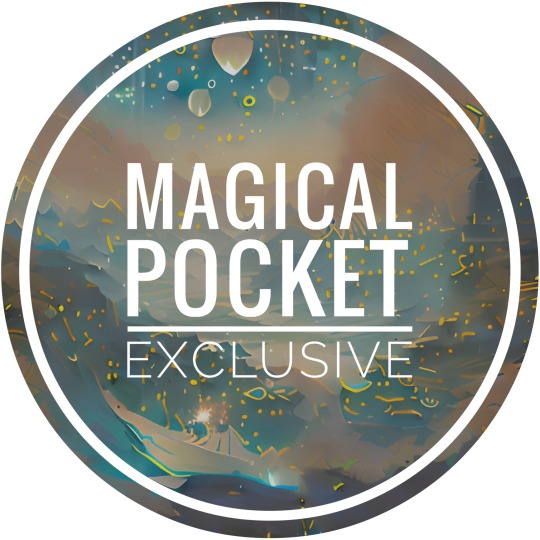
Sunday 22 October Mixtape 388 “Magical Pocket EXCLUSIVE”
Morning Lounge Experimental Electronic
Wednesdays, Fridays & Sundays.
Support the artists and labels.
Don't forget to subscribe or tip so future shows can bloom.
Trevlad Sounds-Welcome in you wonderful listener 00:00
Oblong-Frost Pocket 00:31
Oscar Rocchi-Medusa 03:34
Donnacha Costello-Mespil At Night 06:12
Oblong-Fast Radio Burst 08:31
Turista Per Sempre-Sweet Going 12:40
Can-All Gates Open 15:40
The Twelve Hour Foundation-Macaroni Cheese 22:54
Cloudface-3 step 26:18
The Ocean Tango-Azimuth 34:28
Lone Bison-Learning Poly 38:36
Bibio-Even More Excuses 40:57
Mark Barrott-Back To The Sea 44:50
Dexter Story-Eastern Prayer ft. Nia Andrews 46:22
Binaural Space-Sand Wedge 49:14
Moan (Shinji Masuko)-Banded Agates 50:04
Lone Bison-Origin Story 1:00:44
David Boulter-Back On The Estate - Instrumental 1:03:39
David Boulter-Back on the estate 1:06:34
The Twelve Hour Foundation-Sumer is Icumen In 1:09:52
Mooryc-Wiped Out 1:12:34
Domenique Dumont-Un Jour Avec Yusef 1:16:11
Bibio-Thatched 1:20:02
Piero Umiliani-Magical Children 1:23:49
Ginger Root-Loneliness 1:26:48
Polypores-Crystal Shop 1:29:46
Listening Center-Unconfident Days 1:33:10
#Oblong#Memetune Recordings#Oscar Rocchi#Four Flies Vaults#Four Flies Records#Donnacha Costello#Look Long#Turista Per Sempre#Can#Mute#The Twelve Hour Foundation#Cloudface#The Ocean Tango#Lone Bison#Castles In Space#Bibio#Warp Records#Mark Barrott#International Feel#Dexter Story#Soundway Records#Nia Andrews#Binaural Space#Moan (Shinji Masuko)#Data Garden#David Boulter#Mooryc#Sonar Kollektiv#Domenique Dumont#Antinote
0 notes
Text
Friday, November 30, 2018
Last Quarter
Moonset: 12:01 am (CST)
Moonrise: 1:12 pm (CST)
Day 23 - 44.1%
Azimuth: 194° 44’ 15”
Altitude: 68° 33’ 11”
Distance: 366,259km
Angular Diameter: 0° 32’ 37”
Ecliptic Longitude: 165° 00’ 28”
Ecliptic Latitude: 3° 41’ 10”
Obligatory of the Ecliptic: 23° 26’ 12”
Local Sidereal Time: 11h 34m 12s
Right Ascension: 11h 10m 37s
Declination: 9° 17’ 49”
-
Sunrise: 6:44 am (CST)
Sunset: 5:08 pm (CST)
Daylength: 10h 24m 04s
Azimuth: 117° 22’ 44”
Altitude: 3° 08’ 38”
Distance to Sun: 147,533,308km
Sun Angular Diameter: 0° 32’ 36”
-
Zodiac: Virgo
Symbol: Crocodile Makkara
Crystals: Smoky Topaz, Black Nephritis
Characteristics: The Energy is dairy, heavy, unfavorable, aggressive, violent. A day of challenges and tests.
Health: Overeating is dangerous this day. Fermented milk and milk products are favorable. The best menu is milk and crusted pie with nuts. Avoid meats, coffee, and alcohol. Overeating can lead to digestive tract problems. Take less water. Fasting is allowed.
Meditation:
Business: The energy this day is complicated and can lead to conflicts and aggression during conversations. The second half of the day is not favorable. If you act alone, telepathically, then the power of the Moon can help to realize the most elaborate plans. This is a day of complex alteration. Unimportant things can be recovered and eliminated.
Meditation: This day is suitable for concentration. You can concentrate on the knowledge you are interested in. For instance, if you learn symbols to concentration on you’ll get more understanding. If you have trouble understanding something, try to concentrate on this day. You can also improve on your ability to concentrate. If you are among huge crowds of people, use the energy of this lunar day and move as if you’re scanning the spaces around, softly passing the people by.
Recommend: Practice restraint and humility, forgiveness, moderation in everything. Take care of your health. Good for cleaning and protecting your house. Burning incense and candles is recommended. Physical activity and sports are recommended.
Precautions: Avoid negative emotions, vengeance, anger or use of force, which may turn against you. Avoid being in large crowds, provocation. Overeating is dangerous, and meat is not recommended. Sex is not recommended.
Planting: Moon in Virgo is barren and moist. Good for cultivation and destroying weeds and pests. Best for setting and transplanting of plants.
2 notes
·
View notes
Text
#12 Breakdown of Diya’Al Din’s original astrolabe
After contacting Hemisferium I was surprised to learn that my object was not an exact replica of the original piece made by Diya’Al Din Muhammad in 1647, but that it had involved an extensive team who worked on analysing the original and then updating it for the contemporary day.

Object title: Astrolabe: Eastern
Maker(s): Diya' al-Din Muhammad (Maker)
Date produced: 1647 - 1648
Place of production: Lahore, Pakistan
Material(s): Brass, Copper
Dimensions (H x W x L): 21.1 (cm) x 12.3 (cm) x 4.1 (cm) (Object)
Dimension notes: Mater thickness: 0.9 cm
Description: Body, rete, graduated diopter with scales and sights, pin, handle, ring and 4 tympans. Horse missing. 33 star markers. Labelled in Arabic.
Inscription/signature: `amal diya' al-din muhammad ibn mulla qa'im muhammad ibn mulla `isa ibn mulla allahdad asturlabi humayuni lahawari sanah 1057 hijri" [The work of Diya' al-Din Muhammad ibn Mulla Qa'im Muhammad ibn Mulla `Isa ibn Mulla Allāhdād, the astrolabe-maker, the Humayuni, the resident of Lahore, in the year 1057 of the Hijra].
On display: Astronomy in Culture
Hemisferium were able to provide me with a breakdown of how exactly the original 1647 Diya’Al Din Muhammad astrolabe is composed which is as follows:
Front
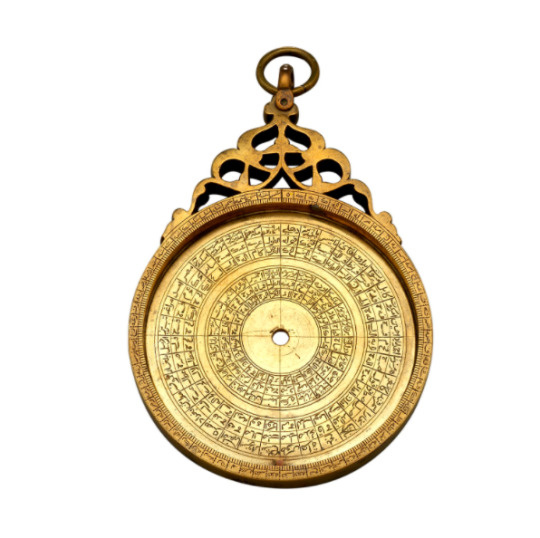
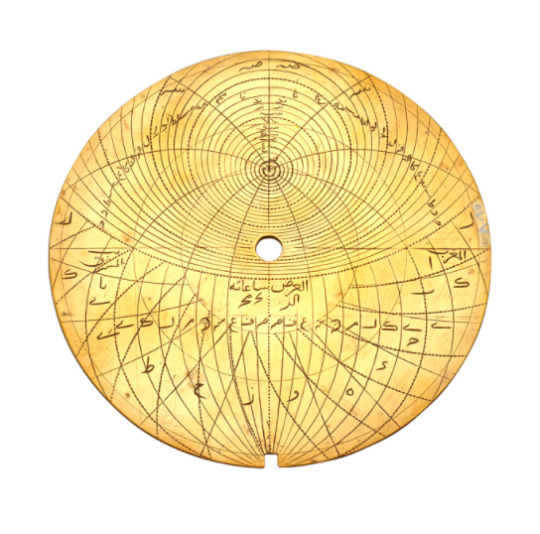
Engraved on the original mater are two concentric circles, bearing names of cities, their longitudes, latitudes and identification.
The inner circle includes two cities referenced on the back of the instrument: Lahore, longitude 109° and latitude 31.5°, and Varanasi, longitude 117.2° and latitude 26.5°
On the periphery we find the limbus, or outer rim, labelled with 1 degree marks and 5° intervals which run clockwise from 1° to 360°, with the latter located under the throne.
This original piece includes four different plates for different latitudes, plus two others, one of them with multiple horizons and the other for the 66.5° latitude, which enables the user to convert from equatorial coordinates to ecliptic ones.
In the lower part of each plate there is a notch that fits onto a pin in the lower part of the mater, so that the plate is properly fixed and there are no displacements.
On the plates or tympani, circles denoting heights (almucantars or almucantarats) are indicated every 3° and azimuths every 30°.
Uneven hours and Babylonian hours are also represented.
The rete or net, which is on the surface of the mater, portrays the ecliptic, which is subdivided every 6, 12, 18, 24 and 30 degrees, starting from each sign of the zodiac. Stars are noted on a separate list, thirty-three in total.

Back
The back of the instruments is divided into upper half and lower half.
Upper half of the back
On the outer rim of the semicircle, the upper half contains two scales for measuring heights, labelled degree by degree (following the alphanumeric system) and with divisions at every 5° up to 90°, starting from the horizontal on both right and left.
Each scale originates at 0° and ends at 90° in the central section of the throne, in such a way that the left-hand side scale progresses clockwise, and the right-hand side scale goes anti-clockwise.
On the left-hand side of this semicircle there is a Sine scale divided into thirty equal double parts.
On the right-hand side there is a scale of maximum heights, which represents the curves for latitudes – 27° (Varanasi) and 32° (Lahore).
This scale for maximum heights includes distances for the entrance into the signs of the Zodiac (separated by equal distances).
There are ‘prayer lines’ with the purpose of indicating the correct times for Muslim prayers in the different seasons.
In most Islamic astrolabes, a quadrant on the back (quarter of the circle) depicts a chart corresponding to the Sun’s altitude at the moment it crosses the zenith in Mecca for a particular latitude. This way, if we determine the altitude corresponding approximately to a particular day of the year, we will see the Sun is located at the altitude we have determined on the chart. The Sun’s azimuth at that moment will correspond to the azimuth of the Qibla.

Lower half of the back
The lower half has an engraved ‘shadow quadrant’ which is an altitude scale.
On the right, both the straight shadow scale (umbra recta) and the reverse shadow scale (umbra versa) are divided into 12 inches.
On the left, they are divided into seven feet.
Inside this square are engraved the names of the signs of the Zodiac and, further inside, the Lunar Mansions.
On the rim of the lower half, surrounding the shadow quadrant, there is a cotangent scale.
The right-hand side is divided into 36 parts and the left-hand side into 21 parts.
Alidade
The alidade has sights/vanes which allow the user to establish the altitude of the Sun and the stars.
It is furnished with a scale for maximum heights and another scale for the Sine measures.
This astrolabe does not have the typical bolt which traverses the alidade, the mater, the tympanum and the rete.
Although it has an indentation which matches the wedges of the other components and allows the user to rotate the alidade and the rete over the plates
Throne or Kursi
At the top of the back, there is a detailed throne with a hole designed for the hanger rings. (So the user could hold the Astrolabe easily).
In the centre of the back is the name of Diya' al-Din Muhammad, that he was the son of Qa'im Muhammad, and that is was produced in Lahore in 1647-48.
What is Notably missing
Hemisferium noted an important shortcoming in the original astrolabe is that there is no regula, and the hours are not inscribed on the limbus in two XII-hour halves; there is no zodiacal calendar either.
All images kindly supplied by the Adler Planetarium
10/02/2020
1 note
·
View note
Text
Moon Phase Prediction Software & Ebook(r.
New Post has been published on https://autotraffixpro.app/allenmendezsr/moon-phase-prediction-software-ebookr/
Moon Phase Prediction Software & Ebook(r.

Buy Now




Click the screenshots below for larger views

Main screen shows data at a glance

Moon and Sun positions during the day
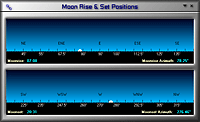
Positions of Moonrise and Moonset
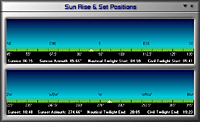
Positions of Sunrise and Sunset
(incl. compass directions)

Monthly Ephemeris Screen
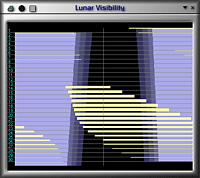
Moon Visibility Screen

Moon Phases Diagram

Date Data

Equinox & Solstice Information
Used by amateur astronomers, military people, photographers, gardeners, fishermen, hunters, hikers, researchers, psychologists, astrologers, stockbrokers, Wiccan, new-age, religious groups and more!
The Moon has seen a resurgence of interest in the last few years, both in space exploration and among amateur astronomers. Of course, it’s always been of interest to military people, hunters, fishermen and gardeners as well as to those where the Moon plays a large part in their religion.
Telescope sales have exploded in the last five years as the cost of a decent instrument has fallen so low that very good ‘scopes now only cost a couple of hundred dollars. This has opened up the skies to a whole new generation of skywatchers.
As our cities grow ever larger, the amount of lighting has also increased and many city-dwellers are hard-pushed to see anything but the brightest stars in their neon-glow skies. But the Moon, being the second brightest object in the sky (after the Sun) suffers no such indignity. It serenely crosses the sky, ever visible (providing clouds allow!) regardless of the amount of light pollution.
Take a look at the screenshots to the right
The software offers the following features:
Always opens up to the current phase of the Moon
Moon rise and set times
Sun rise and set times
Times of morning and evening twilight
Times and dates of the major moon phases for the current month
Daily phases for the Month diagram (can be printed out on calendar)
A diagram showing the compass directions for the rising and setting Moon
A diagram showing the compass directions for the rising and setting Sun
A screen listing the Moon’s nearest and farthest distances to the Earth
A monthly ephemeris of Sun, Moon rise and set times, twilight times and Moon phase
Display the Moon as seen through different types of telescope/binoculars/naked eye
A screen graphically showing when the Moon is above your local horizon during the month
For the amateur astronomers, it gives libration and colongitude information
An inbuilt calendar that lets you see data for different dates and times
A Daily View diagram that shows where the Moon and Sun will be in the sky for the selected date
The Daily View diagram and information can be printed out
A calendar for the selected month (showing rise/set times and daily moon phases) can be printed out
Lists Equinox and Solstice information as well as the length of the seasons for the selected year
Gives the date of Easter Sunday for the selected year
Provides data on a selected date – day/week no.; days till Christmas
Links to online resources on the Moon and Moon Missions
The Daily View screen shows where the Moon and Sun will be during the day, overlaid on a blue band that shows morning and evening twilight and the hours of daylight. In addition, the height of the Moon and Sun on the day in question are also shown.
Anyone interested in sunrise and/or sunset will benefit from the the Sunrise & Sunset Positions screen as this shows where to look for both (as seen from your location) and also gives the compass bearing (azimuth) of both. Times of Nautical and Civil twilight are also provided as the available light around these times of day can make for great photographs.
Photographers and anyone intersted in the Moon’s cycle will appreciate the Moonrise & Moonset Positions screen as this shows where to look for both (as seen from your location) and also gives the compass bearing (azimuth) of both.
So What Do People Use LunarPhase Lite For?
Amateur astronomers use it for planning observing sessions – either to plan when to look at the Moon or to find out when it’s out of the way so they can study the deep sky
Astrologers use it to predict various Moon cycles and to find when the Moon and Sun are up in the sky
Military people (e.g. the U.S. National Guard, Swedish Air Force) use it to find out when the Moon is New and plan night-time exercises around that time
Hunters use it to plan night hunts
Fishermen use it to find the best times for fishing – when the Moon is high in the sky or around moonrise or moonset
Gardeners use it to plan when to sow seed by the Moon
Stockbrokers use it to plan when to buy and sell stocks (there appears to be some correlation between Moon phase and finance!)
Religions that use a Moon-based calendar use it to find the Moon’s cycles and times of phenomema
Photographers use it to plan photo shoots around the golden hours of morning and evening twilight and to plan photo shoots that contain the Moon.
Mankind is also going back to the Moon within the next 15 years. Many nations now have Moon programs underway, either in the planning stage, as exploratory spaceprobes or as fully commissioned ventures to return humans there. It’s about time! It’s been 36 years since Neil Armstrong first set foot on the Moon and 33 years since Gene Cernan, the last man on the Moon, removed his foot back in 1972. It’s been far too long! LunarPhase Lite will let you dip your toes in the water and learn about the Moon’s various phenomena. Get acquainted with our nearest neighbor!
But That’s Not All!
This package also contains the Our Moon ebook

Our Moon eBook
If you’re new to Moon phenomena and cycles or Moon observing and don’t know where to start or you want to learn some historical tidbits or about some misconceptions about the Moon, this 25 page ebook will give you that information.
Some of the topics covered in this PDF eBook are:
Why the Moon Always Looks the Same
The Nature of Tides
Has Anyone Ever Seen a Meteor Strike the Moon?
The Distance between the Earth and Moon
Phases of the Moon
The Lunar Month
Observing Projects
Does the Moon’s phase affect the crime rate?
What is a Lunation
Lunar Libration
How the Moon looks below the Equator
Moon Illusions
Photographing the Moon
Who Was the First Person to Point a Telescope at the Moon?
LunarPhase Lite will work on Windows 95/98/Me/NT/2000/XP.
No matter what you’re interest in the Moon is,
this package has something to offer you!

Get Your Copy Of “Our Moon/LunarPhase Lite” Now For Only $19.95
You can download it right now — even if it’s 2:00 a.m.!
P.S. Learn things about the Moon you never knew!
P.P.S. Order now and get 8 PDF articles about the Moon, how to choose a telescope and what you can see through a telescope.
P.P.P.S. Enjoy the great introductory price at just $19.95 instead of $29.95 when you order right now!
0 notes
Link
ABSTRACT
Despite great progress in neuroscience, there are still fundamental unanswered questions about the brain, including the origin of subjective experience and consciousness. Some answers might rely on new physical mechanisms. Given that biophotons have been discovered in the brain, it is interesting to explore if neurons use photonic communication in addition to the well-studied electro-chemical signals. Such photonic communication in the brain would require waveguides. Here we review recent work [S. Kumar, K. Boone, J. Tuszynski, P. Barclay, and C. Simon, Scientific Reports 6, 36508 (2016)] suggesting that myelinated axons could serve as photonic waveguides. The light transmission in the myelinated axon was modeled, taking into account its realistic imperfections, and experiments were proposed both in vivo and in vitro to test this hypothesis. Potential implications for quantum biology are discussed.
INTRODUCTION
Over the past decades a substantial number of facts has been discovered in the field of brain research. However, the fundamental question of how neurons, or more specifically all particles involved in the biological processes in the brain, contribute to mental abilities such as consciousness is still unanswered. The true explanation to this question might rely on physical processes other than those that have been discovered so far. One interesting candidate to focus on is biophotons, which might serve as supplementary information carriers in the brain in addition to the well established electro-chemical signals. Biophotons – which are photons ranging from near-IR to near-UV frequency and emitted without any enhancement or excitation– have been observed in many organisms such as bacteria (1), fungi (2), germinating seeds (3), plants (4), animal tissue 1 arXiv:1708.08887v1 [physics.bio-ph] 23 Aug 2017 Are there optical communication channels in the brain? cultures (5), and different parts of the human body (6–9), including the brain (10–15). These biophotons are produced by the decay of electronically excited species which are created chemically during oxidative metabolic processes (16, 17) and can contribute to communication between cells (18). Moreover, several experimental studies show the effects of light on neurons’ and, generally, the brain’s function (19–21). The existence of biophotons and their possible effects on the the brain along with the fact that photons are convenient carriers of information raises the question whether there could be optical communication in the brain. For the sources and detectors of the optical communication process in the brain, mitochondrial respiration (22, 23) or lipid oxidation (24), and centrosomes (25) or chromophores in the mitochondria (26) have been proposed, respectively. It has also been observed that opsins, photoreceptor protein molecules, exist in the brains of birds (27, 28), mammals (29–32), and more general vertebrates (33) and even in other parts of their bodies (34, 35) as well. Another essential element for this optical communication, which is not well established yet, is the existence of physical links to connect all of these spatially separated agents in a selective way. In the dense and (seemingly) disordered environment of the brain, waveguide channels for traveling photons would be the only viable way to achieve the targeted optical communication processes. Mitochondria and microtubules in neurons have been introduced as the candidates for such waveguides (36–39). However, they are not suitable in reality due to their small and inhomogeneous structure for light guidance over proper distances in the brain. Ref. (40) proposed myelinated axons as potential biophoton waveguides in the brain. The proposal is supported by a theoretical model and numerical results taking into account real imperfections. Myelin sheath (formed in the central nervous system by a kind of glia cell called oligodendrocyte) is a lamellar structure surrounding the axon and has a higher refractive index (41) than both the inside of the axon and the interstitial fluid outside (see Fig. 1a) which let the myelin sheath to guide the light inside itself for optical communications. This compact sheath also increases the propagation speed of an action potential (via saltatory conduction) based on its insulating property (42). There has been a few indirect experimental evidence for light conduction by axons (12, 43, 44). Another related and interesting experiment has shown that a certain type of glia cells, known as Muller cells, ¨ guide light in mammalian eyes (45, 46). Ref. (40) also proposed experiments to test the existence of the optical waveguides in the brain. One interesting property of optical communication channels is that they can also transmit quantum information. Quantum effects in biological systems are being studied in different areas such as photosynthesis (47, 48), avian magnetoreception (49, 50), and olfaction (51, 52). There is an increasing number of conjectures about the role of quintessential quantum features such as superposition and entanglement (53) in the brain (15, 38, 54–56). The greatest challenge when considering quantum effects in the brain or any biological system in general is environmentally induced decoherence (57), which leads to the suppression of these quantum phenomena. However, some biological processes can be fast and may show quantum features before they are destroyed by the environment. Moreover, nuclear spins can have coherence times of tens of milliseconds in the brain (58, 59). A recent proposal on “quantum cognition” suggests even longer coherence times of nuclear spins (56), but relies on quantum information transmission via molecule transport, which is very slow. In contrast, photons are the fastest and most robust carriers for quantum information over long distances, which is why currently man-made quantum networks rely on optical communication channels (typically optical fibers) between spins (60, 61).
Results
To show that myelinated axons could serve as the waveguides for traveling biophotons in the brain, Ref. (40) solved the three dimensional electromagnetic field equations numerically in different conditions, using Lumerical’s software packages FDTD (Finite Difference Time Domain) Solutions and MODE Solutions. These software packages solve Maxwell’s equations numerically, allowing the optical properties of dielectric structures defined over a mesh with subwavelength resolution to be simulated. The refractive indices of the fluid outside of the axon, the axon, and the myelin sheath were taken close to 1.34, 1.38 and 1.44 respectively (see Fig. 1a), which are consistent with their typical values (41, 62, 63). These indexes let the myelin sheath guide the light inside itself. The ratio of the radius of the axon, r to the outer radius of the myelin sheath r 0 (g-ratio) is taken equal to 0.6 for the most of the simulations, close to the experimental values (64). In reality, the radius of the myelinated axons in the brain changes from 0.2 microns to close to 10 microns (65). For the purpose of guiding light inside the myelin sheath, Ref. (40) considered the wavelength of the observed biophotons in the brain which is from 200 nm to 1300 nm. Since several proteins in the environment of the axons strongly absorb at wavelengths close to 300nm, a wavelength range of the transmitted light from the shortest permissible wavelength, λmin = 400nm, to the longest one, λmax, was chosen to avoid the absorption and confine the light well in the myelin sheath. λmax is chosen to the upper bound of the observed biophoton wavelength (1300 nm) or the thickness of the myelin sheath (denoted by d), whichever is smaller. Besides λmin and λmax, an intermediate wavelength was considered, denoted by λint , corresponding to the central permissible frequency (mid-frequency of the permissible frequency range) in the simulations. In the following section we discuss the guided modes in the myelinated axons and their transmissions in nodal and paranodal regions and even in the presence of the imperfections such as bends, varying cross-sections, and non-circular cross-sections.
Optical transmission in myelinated axons
Within the neuron, one can identify numerous intra-cellular structures that can function as potential scatterers, i.e. sources of waveguide loss. They are located both inside the axon and outside of the axon. Intra-cellular structures include cell organelles, for example, mitochondria, the endoplasmic reticulum, lipid vesicles, as well as the many filaments of the cytoskeleton, namely microtubules, microfilaments and neurofilaments. Extra-cellular structures include microglia, and astrocytes. However, the electromagnetic modes which are spatially confined within the myelin sheath, should not be affected by the presence of these structures. These biophoton modes considered here would be able to propagate in a biological waveguide provided its dimension is close to or larger than the wavelength of the light. Fig. 1b shows the numerically calculated magnitude of the electric field of a cylindrically symmetric eigenmode of an axon with radius r = 3µm and myelin sheath radius r 0 = 5µm for the wavelength 0.612µm. This electric field is azimuthally polarized as depicted is Fig. 1c and it is similar to the TE01 mode of a conventional fiber (66) which has higher refractive index of the core than that of the cladding. It is important to note that azimuthal polarization would prevent modal dispersion in the birefringent myelin sheath. Importantly, its optical axes are oriented radially (67). It can be readily established that there are hundreds of potential guided modes allowed to exist given the thickness of myelin sheath. Consequently, biophotons that could be generated by a source in the axons (e.g. mitochondria or recombination of reactive oxygen species) could readily interact with these modes as determined by mode-specific coupling coefficients. While we lack detailed knowledge of the particulars for these interactions, for the sake of simplicity and ease of illustration we select a single mode and examine its transmission. It is interesting to analyze transmission in the presence of optical imperfections such as discontinuities, bends and varying cross-sectional diameters. In this connection, we simulated short axonal segments due to computational limitations and extrapolated the results for the full length of an axon.
Transmission in nodal and paranodal regions
A myelinated axon has periodically unmyelinated segments, called Nodes of Ranvier, which are approximatly 1µm long (68) (while the whole axon length varies from 1 mm to the order of a meter). Here, we discuss the transmission in the Ranvier nodes and at the edges of the nodes, the paranodes. The configuration of myelin sheath is special in the paranodal regions (see Fig. 2a). There are many layers making up the compact myelin sheath and at the edge of each node, almost all of the layers are in contact with the core (bared axon) with a small pocket of cytoplasm. That’s because each layer moving from the innermost outward is longer than the one below. However, for thick myelin sheaths, many cytoplasmic pockets cannot reach the surface of the bare axon, but end on inner layers. Thus, the length of paranodal regions is dependent on the thickness of the myelin sheath. We call the ratio of the length of paranode, lparanode, to the thickness of the myelin sheat, d, p-ratio and take its value close to 5 in our simulations based on the realistic values (69). Fig. 2a displays the model of Ref. (40) for two adjacent paranodal regions with the node in between, and Fig. 2b shows the magnitude of the electric field profile in the longitudinal direction (along the length of the axon), EFPL, as a cylindrically symmetric input mode crosses this region. Fig. 2c shows the power transmission in the guided modes as a function of p-ratio for three wavelengths, 0.40 µm, 0.61 µm, and 1.30 µm. For the transmission, there are two main losses: divergence or scattering of the light beam. Shorter wavelengths scatter more but diverge less. Thus, in Fig. 2c, for small p-ratios, shorter wavelengths have higher transmission and as the effect of divergence is dominant in this region and the shorter wavelengths diverge less. However, for the large p-ratios, the effect of scattering is dominant and since the higher wavelengths scatter less, and have a higher transmission. Fig. 2d–f compares the transmission percentage for different axon radii, wavelengths, and p–ratios. Although in Fig. 2d, the behavior of the transmission as a fuction of axon radius is independent of p–ratios for the longest permissible wavelength, it can be concluded that for the most loosely confined modes (λmax) transmission increases in thicker axons. It’s also possible that for long wavelengths, a fraction of the light diverging into the axon comes back into the myelin sheath at the end of the paranodal region and not all the light that diverges is lost. This can be an explanation for not well-defined dependency of the transmission on the paranodal lengths (see Fig. 2d). In, Fig. 2e, and Fig. 2f, for p-ratio = 2.5, based on our intuition from Fig. 2c, the divergence is dominant. Here, the thickness of the axon plays a role in the transmission such that the thicker the axon the divergence is less and the light is transmitted more. However, for larger p–ratios, the scattering is dominant and the light scatters more in thick axons. To summarize, for small p–ratios (∼2.5), the well confined modes (shorter wavelengths) transmit better while for large p–ratios (∼5 or greater), the loosely confined ones (longer wavelengths) transmit better. Thicker axons yield higher transmission for all wavelengths with small p–ratios while it’s inverse only for the shorter wavelengths with large p–ratios. The transmission after several paranodal regions can be roughly estimated by following the intuition of exponentiating the transmission through one (see Supplementary Information of Ref (40))...
Discussion
In this review of Ref. (40) we have discussed how light conduction in a myelinated axon is feasible even in the presence of realistic imperfections in the neuron. We have also described future experiments that could validate or falsify this model of biophoton transmission (40). It is also worth addressing a few related questions. It is of interest to identify possible interaction mechanisms between biophotons and nuclear spins within the framework of quantum communication. Spin chemistry research (87) determined effects whereby electron and nuclear spins affect chemical reactions. These effects can also involve photons. In particular, a class of cryptochrome proteins can be photo-activated resulting in the production of a pair of radicals per event, with correlated electronic spins. This effect has been hypothesized to explain bird magnetoreception (49). It has been recently shown by theoretical considerations that interactions between electron and nuclear spins in cryptochromes are of critical importance to the elucidation of the precision of magnetoreception effects (50). Importantly for this topic, cryptochrome complexes are found in the eyes of mammals and they are also magnetosensitive at the molecular level (88). Therefore, if similar proteins can be found in the inner regions of the human brain, this could provide the required interface between biophotons and nuclear spins. However, for individual quantum communication links to form a larger quantum network with an associated entanglement process involving many distant spins, the nuclear spins interfacing with different axons must interact coherently. This, most likely, requires close enough contact between the interacting spins. The involvement of synaptic junctions between individual axons may provide such a proximity mechanism. We should also address the question of the potential relevance of optical communication between neurons with respect to consciousness and the binding problem. A specific anatomical question that arises is whether brain regions implicated in consciousness (89) (e.g. claustrum (90, 91), the thalamus, hypothalamus and amygdala (92), or the posterior cerebral cortex (89)) have myelinated axons with sufficient diameter to allow light transmission. A major role of the myelin sheath as an optical waveguide could provide a better understanding of the causes of the various diseases associated with it (e.g. multiple sclerosis (93)) and hence lead to a design and implementation of novel therapies for these pathologies. Let us note that, following Ref. (40), we have focused our discussion here on guidance by myelinated axons. However, light guidance by unmyelinated axons is also a possibility, as discussed in more detail in the supplementary information of Ref. (40). Finally, with the advantages optical communication provides in terms of precision and speed, it is indeed a wonder why biological evolution would not fully exploit this modality. On the other hand, if optical communication involving axons is harnessed by the brain, this would reveal a remarkable, hitherto unknown new aspect of the brains functioning, with potential impacts on unraveling fundamental issues of neuroscience.
Source: https://arxiv.org/pdf/1708.08887.pdf
#biophotons#brain waves#waveguide#myelinated axon#Neuroscience#quantum physics#quantum consciousness#wave guide#axons#quantum computing#quantum biology#science#biology#consciousness#light#enlightenment#gnosis#Alchemy#superposition#entanglement
8 notes
·
View notes
